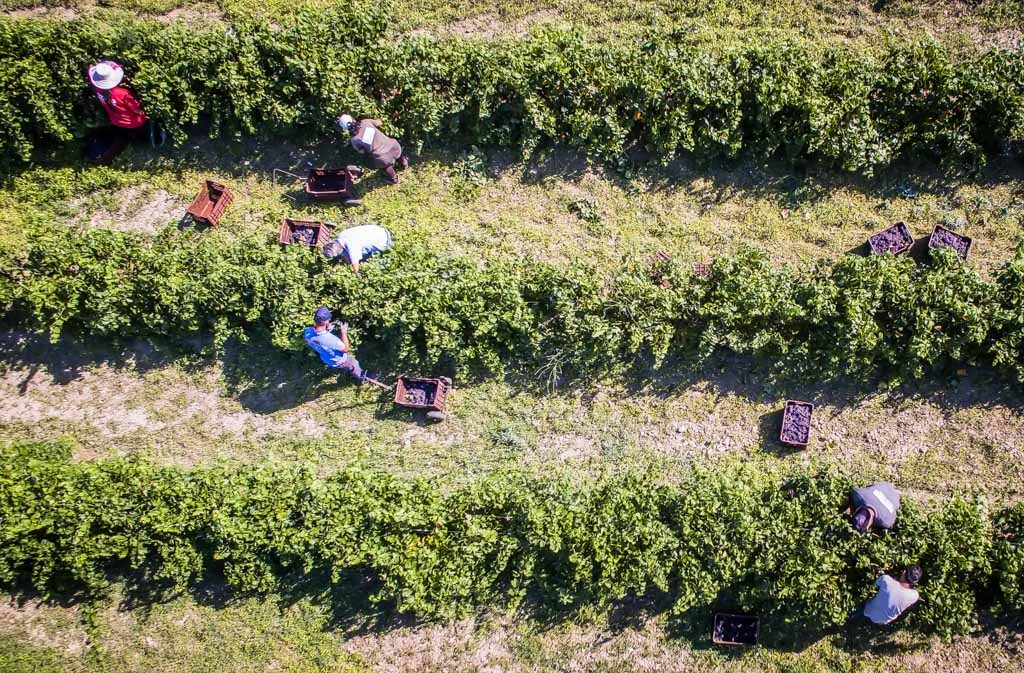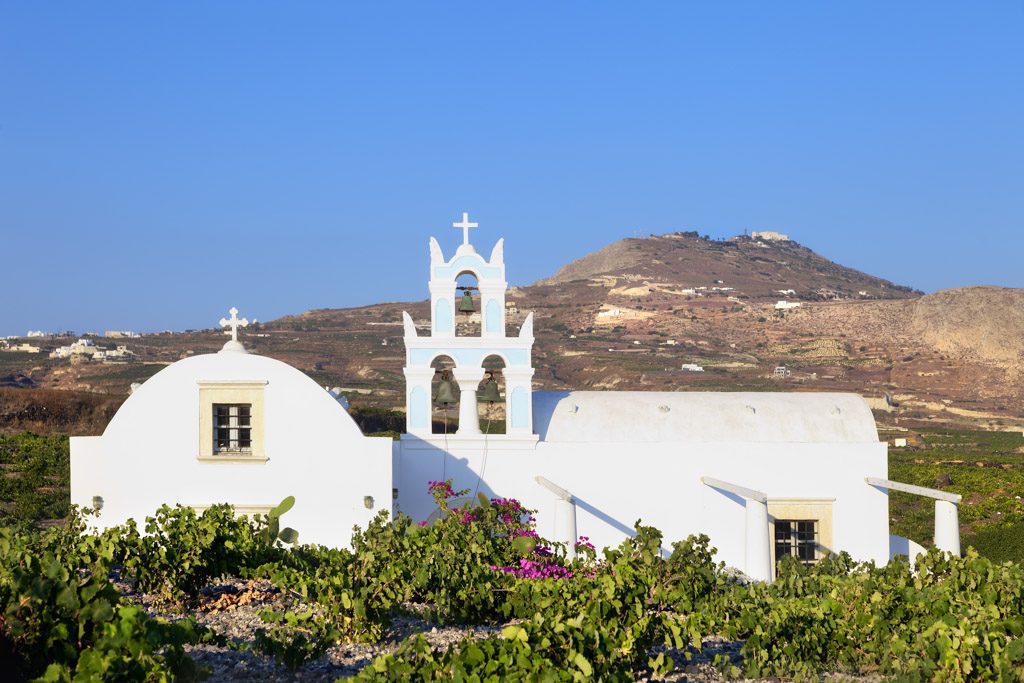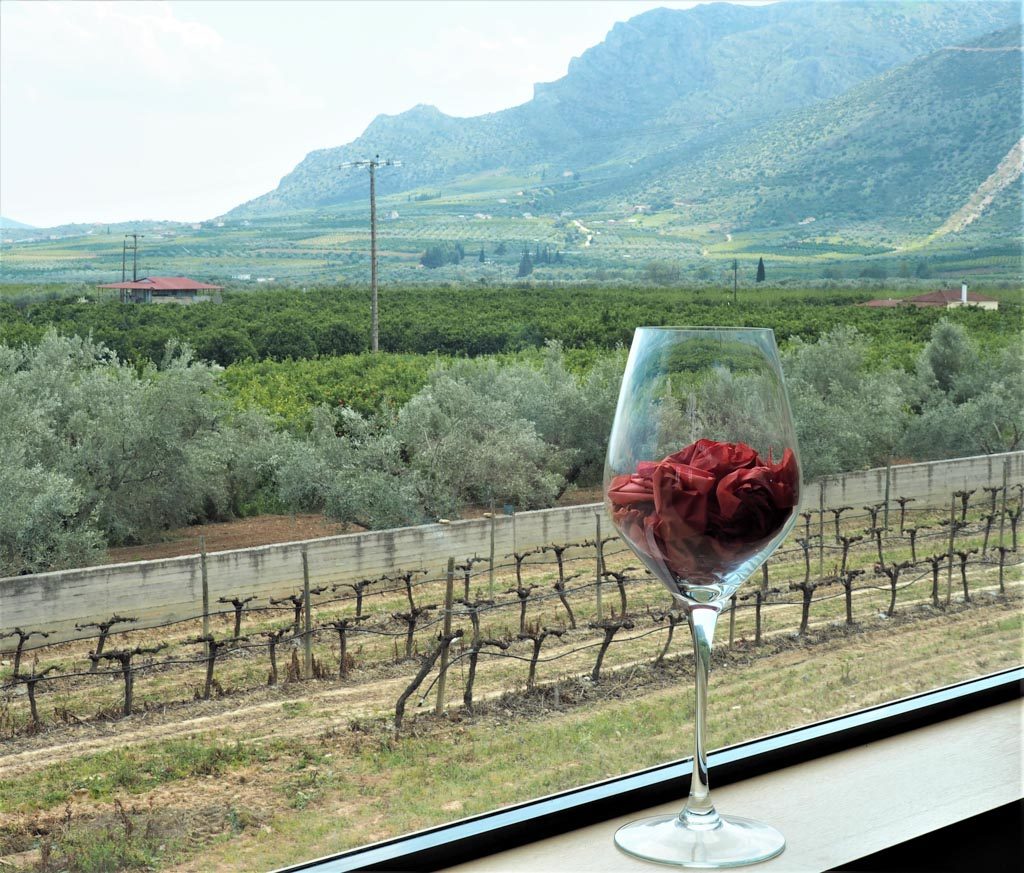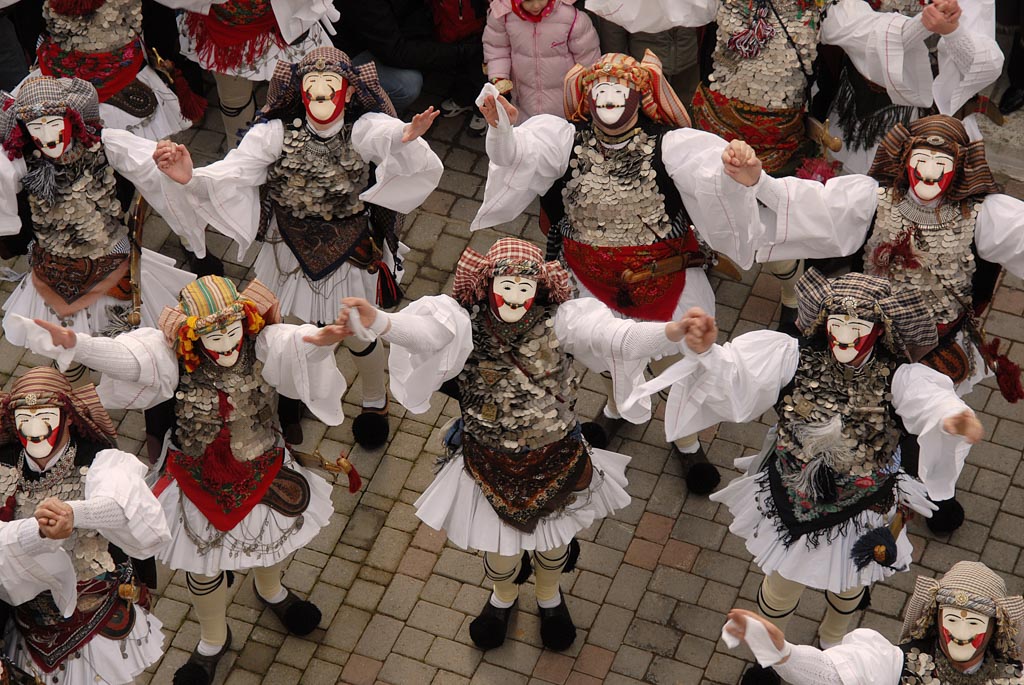The relationship between Greece and Grapes is mythical, literally. There was a god for the grape harvest – Dionysus. He was also – not coincidentally – the god of wine, of fertility, and festivity. The grape harvest is, and always was, a significant time in Greece, a tradition of millennia, with cultural and ritual significance, and with the attendant customs and festivities. The grape harvest transcends the agricultural – it was a sacred time in ancient Greece, and it has retained that significance into the modern era. The grape harvest is a fantastic time to visit Greece, a way to see into the heart of true culture – combining agriculture, ritual, and of course the wine itself.
An Urgent Harvest
Despite the modernization of the cultivation of grapes and their harvesting, much tradition is still attached to the grape harvest in Greece. Many rituals have stood the test of time. And in the rituals that now encompass Christianity, we still see traces of the rituals of the most ancient times, connecting the rich past of Greece to the present in a meaningful way. The cycles of the harvest are eternal, and the grape harvest is a wonderful time to experience that timeless sense of connection to the land and its many blessings.

The grape harvest is a time that brings together communities. Because the main season for harvesting is September – and before the grapes start rotting – many hands are needed in the vineyards. It is essential to not only harvest the grapes at their peak, but also to finish the harvest quickly – rains interrupt not just the work, but more crucially, wet grapes can develop mold. This makes the work both urgent and festive – a time where everyone comes together. Hard work is interspersed with feasting and socializing.
Traditionally, friends, family, and neighbors would come together, each playing their own essential roles. Women and even children would pick the grapes, laying them carefully into baskets. Young men with stronger backs would then carry the heavy baskets for the gapes to be pressed. Songs would enliven the day and lighten the work.
This was followed by the “Patitiri” – the grape stomping. As it sounds, this means the stomping of the grapes by foot. Now, of course, machinery is used in all but the very smallest scale productions, such as by an individual family. Although even where machinery is available, there is sometimes still a patitiri – a beloved custom to connect with the past, and indeed have a very good time.
The Harvest Rituals of Ancient Greece
In antiquity, the grape harvest was a significant season. Then – as now – thanks was offered and divine assistance sought. In the ancient world, one of the customs related to the harvest was that young men would dress as women and, bearing bunches of freshly harvested grapes, they would run a race from the sanctuary of Dionysus in Athens to the Temple of Athena that was once in what today is Faliro. But the wine making culture of Greece is older than that. In fact, evidence of viticulture and wine production exist from the neolithic period. The Minoans of Crete, learned production methods from their trade with the Egyptians, and the Mycenaeans too likely benefited from these methods. But it is the ancient Greeks, and not the Egyptians, with whom we most associate the culture of wine. From Ancient Greece, viticulture spread through the great wine growing regions of Europe – today’s France, Italy, and Austria.

Santorini is another place in Greece with an ancient tradition of viticulture, extending back some 3,500 years. In Santorini, one finds some of the oldest vineyards in the world. And, due to the unique cultivation practices of wine in Santorini – dictated by the strong winds of the island – the harvesting process shares much with that of ancient times. While the vines of wine grapes in Greece are usually trained to grow in rows, those of Santorini are sheltered from the legendary winds by being trained into a basket-like bush, close to the ground. This necessitates harvesting by hand – careful and hard work – the reward is in the excellent traditional wines for which the island is justifiably famous – Assyrtiko chief among them. The name for the whole harvesting process is called the “Vendema,” and preparations for it begin in early August.
A Season of Gratitude
Today, the sacred still plays a role in the Grape harvest of Greece. Christianity has long since taken the place of the ancient gods of Olympus. The blessing of the grapes by a priest is a common ritual. In many parts of Greece, this takes place on August 6th, with the very first of the grapes that ripen. In Ikaria in the past, a celebration took place a couple of weeks before that, on the feast day of the Prophet Ilias. On this day – July 20th – vintners would take bunches of the first of the harvest to the church of Prophitis Elias for a blessing by the priest to ensure a good harvest for the year’s crop.

Offerings are another tradition with surely ancient roots. In many parts of Greece, a portion of the vineyard is left entirely untouched – a gesture of gratitude. In the very beginning of the season before the planting, some wine from the last year’s harvest is poured onto the soil, accompanied by blessings from the local priest.
More Local Traditions
Women have always played a great role in the harvesting of grapes, both in the actual hard work, and in regional customs. For example, in Macedonia, the wife of the vintner, would give a wool apron to the women who would be helping in the harvest.
On the Ionian island of Lefkada, the wife of the vintner would lick a stone and hide it among the bunches of grapes. The baskets of grapes would remain covered with leaves to stay cool until pressing.
Experiencing Local Wines
Certain regions of Greece are strongly associated with specific grape varieties. This is an excellent time for oenophiles to really get to know some exceptional Greek wines in their native terroir. The aforementioned Assyrtiko is strongly associated with Santorini, and the grape finds its most nuanced expression. In Macedonia, one can enjoy PDO Xinomavro (“Black-Sour”) in Naoussa, while in Amyntaio one can try Greece’s only PDO rose, also from Xinomavro. Samos is extremely famous for its cultivation of Muscat of Alexandria, which has a PDO.

Samos Muscat Vin Doux is an exquisite dessert wine, redolent with fruit. Rhodes also has a PDO Muscat, as well as a PDO white of Rhodes, which is a blend of Athiri (at least 70% Malagousia, and 30% Assyrtiko). The Peloponnese is rich in other indigenous grape varieties, including Mavrodaphne, Moschofilero, and Agiorgitiko.
Many of Greece’s indigenous grapes are ancient varieties. Tasting them is yet another meaningful way to connect with Greece’s past.
A Time for Celebration
At the end of the harvest, a great feast is arranged by the vintners for everyone who has taken part. This is sometimes called a “Kritsma” – a joyous and informal celebration, like a big family picnic. Commercial wineries will also hold such celebrations.
What is the sweet to mark the occasion? In many parts of Greece, a sweet is made at the time of the grape harvest, “Moustalevria.” “Moustos” is the thick grape must. Some of the juice is set aside and not sent to be fermented. This is boiled down and thickened with flour (“alevri”) to become a thick and fragrant pudding that tastes of all the sweetness of the end of summer and the Greek sun.
One of the Best Times to Visit Greece

The sweet sun of September, the slightly cooler temperatures, and above all the festivities surrounding the harvest season make this one of the most wonderful times to visit Greece. It is a somewhat quieter season, free from the crowds of the summer months, but with plenty of warm weather to enjoy Greece at its finest and most authentic.
Have you ever been to a grape harvest in Greece?





